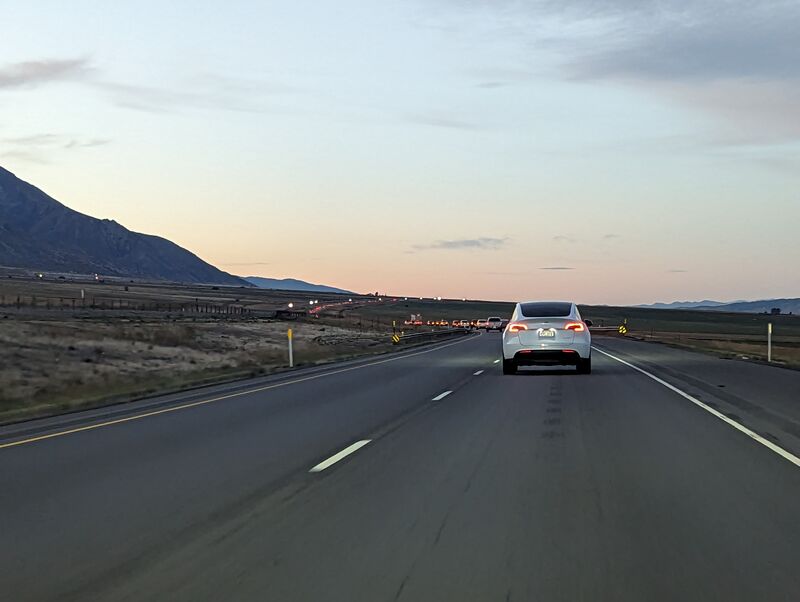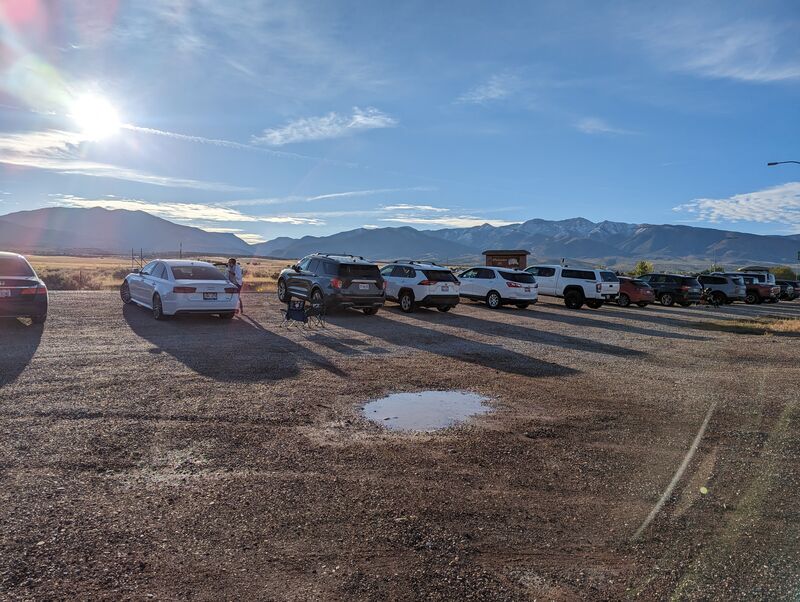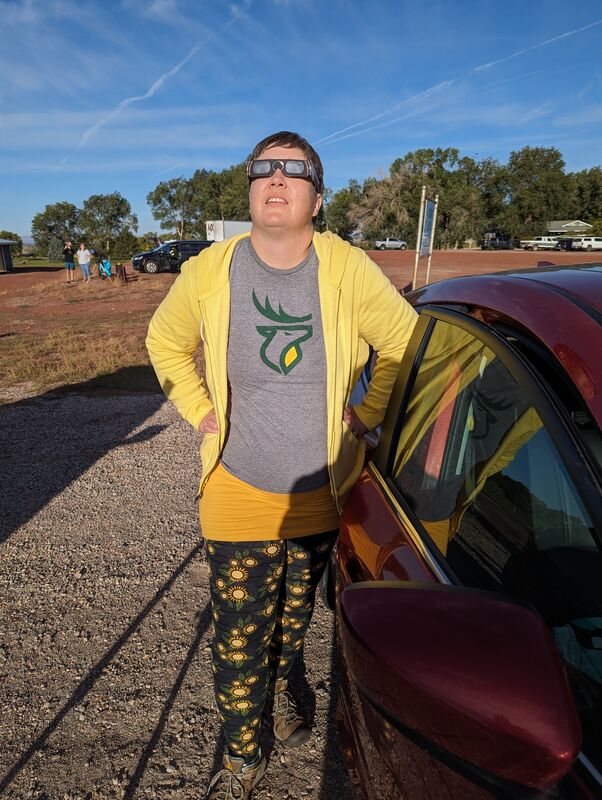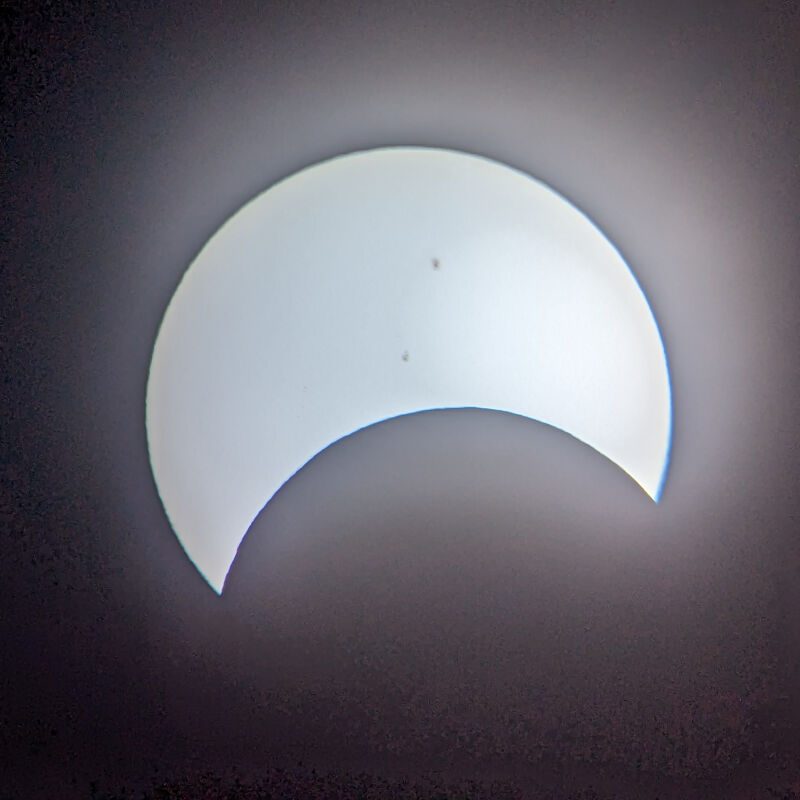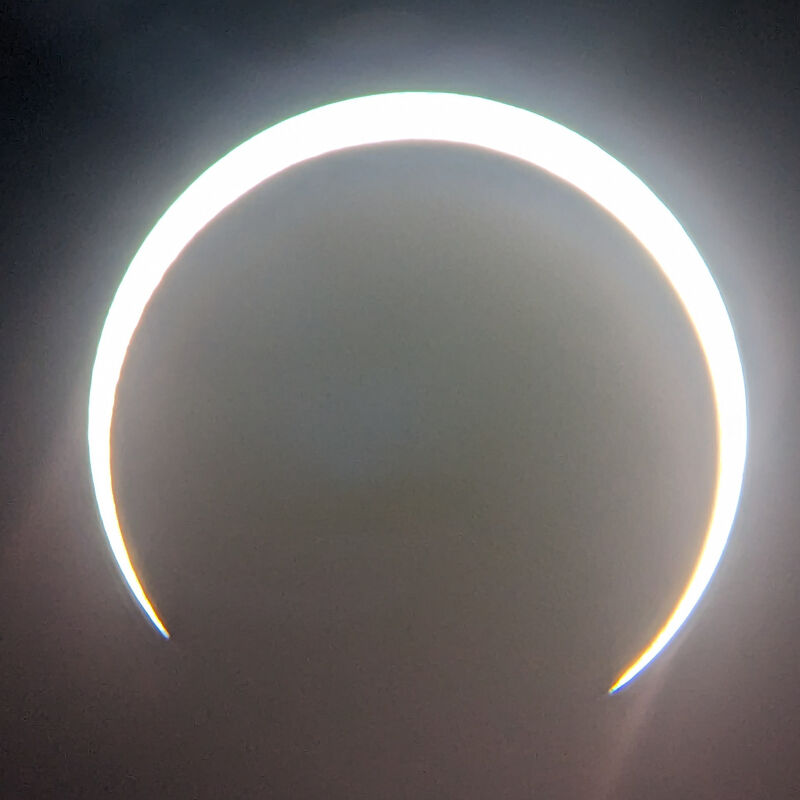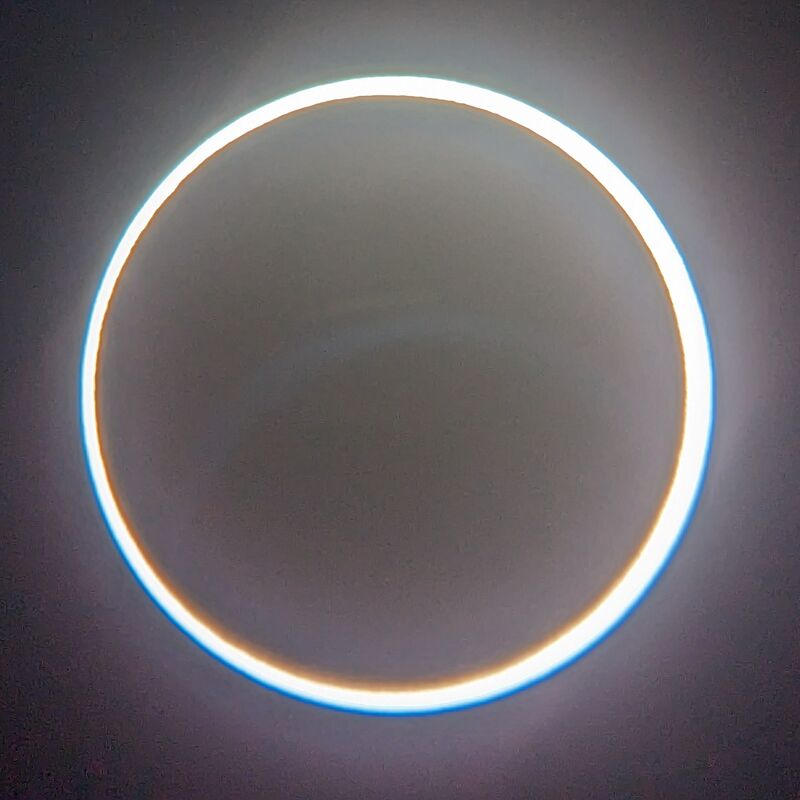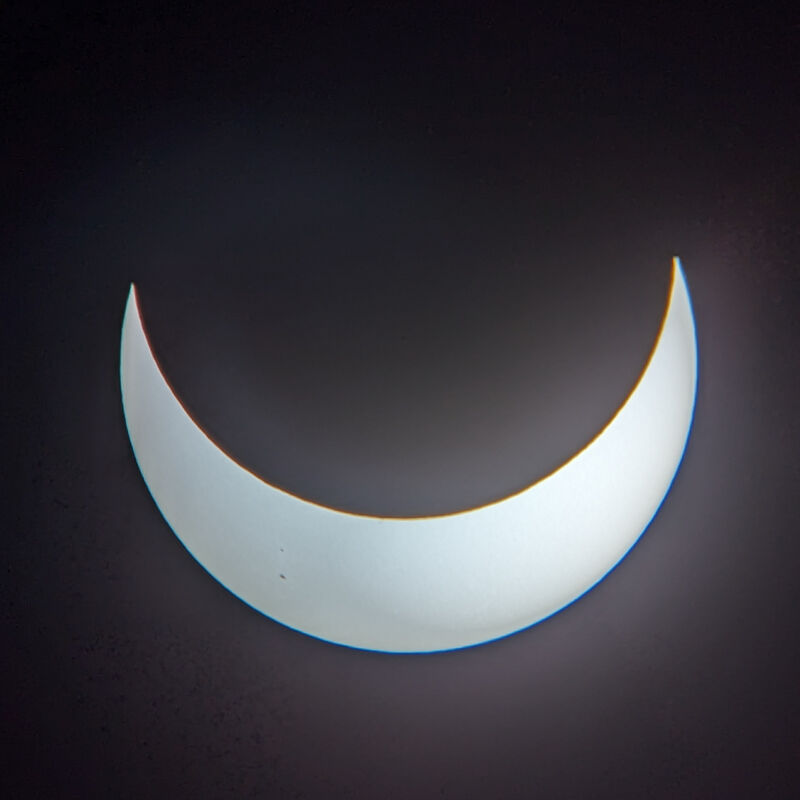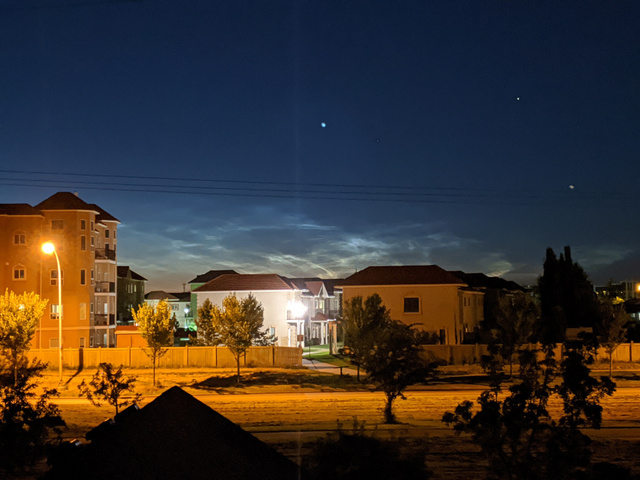Posts in category 'astronomy'
- (https://b-ark.ca/sg0mw_)
Yup, we went on a road trip to Utah and watched the annular eclipse. And it was incredible! Though the photos are just okay. At the last minute I decided to take some pics with my phone through my telescope eyepiece and the results were… just okay. I can’t help but wonder if the eyepiece needed a little polishing…
- (https://b-ark.ca/yW8WAm)
The Astronomy Picture of the Day from NASA has been in my RSS feed list for as long as I can remember. There’s a lot of things I love about it, but that it’s basically a flashback to the late 90s web is definitely near the top of the list.
- (https://b-ark.ca/EACeuq)
Noctilucent clouds in the northern sky over Edmonton. One of the many upsides of living so far north!
Noctiwhat?
You may recall that back in Blog-2006-06-24, I wrote about ghostly blue clouds that I observed in the northern sky at the end of my observing session. Well, as it turns out, I was fortunate enough to catch a glimpse of a type of cloud known as a Noctilucent_cloud. These extremely high altitude clouds are typically too faint to be seen. However, when illuminated from below by a deeply set sun, they are visible as the beautiful blue colour I observed.
So, how did I figure this out? Well, I happen to read the Astronomy Picture of the Day, and Today’s Feature Image just happened to be of noctilucent clouds.
A Night Under The Stars
It’s hard to believe tonight was the first night I’ve gone on an observing session since we moved into the house (and, in fact, probably long before…). Of course, I’ve taken the scope out to view the moon, or the odd planet, but those events hardly count. And with beautifully clear skies (albeit quite bright) and wonderful weather, I could hardly pass up such a wonderful opportunity.
Of course, with Jupiter currently big and bright in the sky, it goes without saying that I started there. The Galilean Moons put on an lovely show tonight, with Calisto and Europa to one side, and Io and Ganymede to the other, forming a nice chain with the planet in the center. As for Jupiter itself, tonight had to be the finest seeing I’ve had of the gas giant, allowing me to view the atmospheric banding clearly. This, by itself, was worth the effort to lug my scope outside.
With my appetite whetted, I decided to split one of the most famous multiple star systems in the sky: Mizar. This star forms the bend in the handle of the Big Dipper, and in a dark sky, it’s 4th magnitude companion Alcor can be seen with a good unaided eye. In my 4” scope, Mizar itself was easily split into it’s two components, Mizar A and the 4th magnitude Mizar B, forming a nice pairing. I just can’t believe I’ve never observed it before, or that it’s the first double I’ve split. Very lovely.
Next, I decided to move on to some deep sky objects. Now, because of our northern latitude, and the fact that I chose to observe just a few days after the solstice, the sky is quite bright. As such, I chose the Hercules Cluster, aka M13, as my next target. This bright (magnitude 4.5) globular cluster is very prominent in the northern sky, which makes it all the more surprising that I hadn’t observed it before. In my eyepiece, it forms a surprisingly bright, fuzzy blob with ill-defined edges. Of course, my telescope isn’t powerful enough to resolve any member stars, but it’s still an impressive object to observe. Especially when one realizes it’s composed of several 100,000 stars…
Lastly, with one deep sky object under my belt, I decided to go for another. This time, M39. This open cluster near Cygnus is remarkably large, easily filling my wide field, low mag eyepiece. It’s quite pretty, with many stars of varying brightness. A lovely object to observe.
So, with that, my observing session was complete. However, I was given one last treat. Far off in the northern sky, high altitude clouds were reflecting light from the sun, which never really sets at this time of year. But, rather than red or orange, as is typical, these clouds appeared a ghostly blue. The resulting pattern looked like light refracting through a pool of water. Absolutely beautiful.
As an aside, tonight was also the first night I had the opportunity to use my Palm for observing purposes. I gave Planetarium a whirl, and I gotta say, it was excellent! Having an easy-to-read starchart in my pocket is incredibly convenient, and with Night Mode, I can read the chart without needing a filtered flashlight. Fantastic! This is definitely a program I’m going to purchase.
Astronomy Hacks
Tonight I decided to get my Red Green on and hack together a really crappy camera mount for my telescope! It’s made from various pieces of vacuum tubing (which happens to be 2” in diameter, the same diameter of the eyepiece holder on my scope), some hardboard, and much tape (unfortunately not the duct variety… yes, I am ashamed. I had to settle for electrical). The end result was this thing:
Yes, it’s as hackish as it looks. The idea is that it sorta fits over the eyepiece holder and has a separate sliding component which allows the mount to adjust for the camera lens position, differing eyepiece lengths, etc.
So, with it, I decided to take another crack at lunar photography. I captured the following image with my wide-field 25mm eyepiece (for about 60x magnification) (in this image, north is to the left):
I’ve sharpened the image to adjust for some atmospheric turbulence and poor focusing on my part. In addition, there appears to be some blurring toward the left edge of the image which is probably a result of the camera not being evenly positioned against the eyepiece.
After staring at a Lunar Map for quite a while, I managed to identify some of the more interesting features. Among them, toward the right edge of the image you can see the famous crater Tycho (it appears smaller than some of the others, but has a prominent central protrusion). This particular crater is the epicenter of a set of lunar rays which, while not incredibly prominent in this image, are visible.
Moon Shots
Well, I decided to try and do a little astrophotography with my el cheapo Casio digital camera and my binoculars (the moon being the selected target). I was inspired after an article in Sky and Telescope which discusses the astrophotography possibilities with regular, consumer-grade digital cameras, and so I figured I’d give it a whirl. The result was this:
This was done with my 7x50 binos, and the camera set for a 640x480 frame at nearly full digital zoom (I was quite surprised by the suggestion, in the article, of using the digital zoom feature of the camera… I had assumed this would result in poorer image quality. It appears I was wrong!) ‘course, I was going to attempt a higher-resolution image at the maximum zoom level (hoping to capture more crater detail), but, as you’d expect, clouds moved in and interrupted my view.
About the only problem I have with the image is the brightness. I tried to set the camera to the highest ISO setting (which also has the nice effect of reducing noise, due to the higher shutter speed), but apparently that wasn’t enough. I’ll have to toy around some other night and see if I can get better results.
